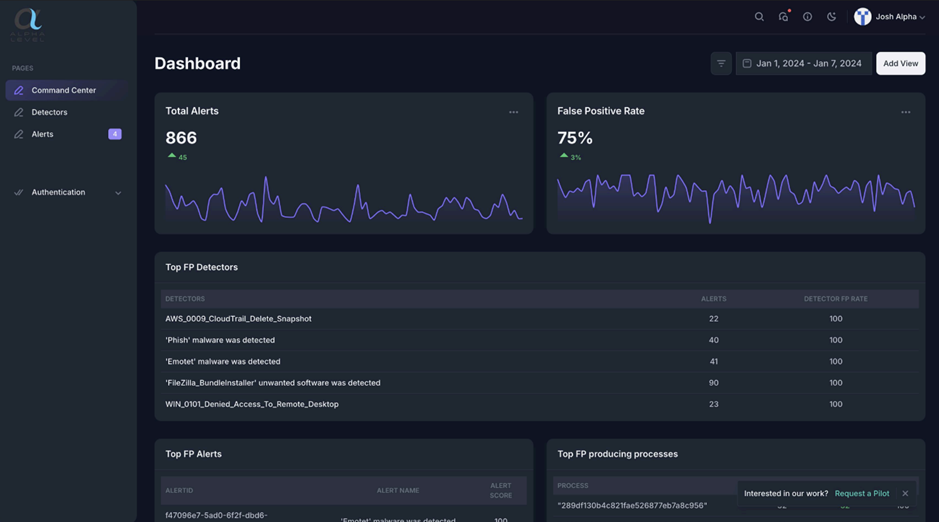Challenge: Hindrance in user experience and efficiency for role-specific threat detection
Our client faced several usability and productivity challenges including,
- The platform functioned as a one-size-fits-all system, with no role-specific workflows. Information wasn’t tailored to user needs, leading to inefficiencies and slower decision-making.
- Overlapping functionalities leading to user confusion and operational friction.
- Lack of role-based customization, which limited productivity for specific users.
- Need for a structured process to align stakeholders and ensure design clarity without disrupting existing operations.
So, Alpha Level sought a team of experts to improve user interaction, streamline workflows, and modernize its threat detection platform.
Solution: Delivering a role-centric platform redesign through structured UX practices
Our expert UX solution team led the end-to-end redesign, ensuring the platform was intuitive, scalable, and built around real user needs. The approach combined discovery, design thinking, and iterative validation to balance stakeholder goals with user experience.
zeb’s structured approach included:
- Alignment Workshops: Defined scope, timelines, milestones, and stakeholder expectations with clear session plans to ensure transparency and alignment.
- Current State Analysis: Conducted in-depth walkthroughs to identify strengths, pain points, and feature gaps.
- Persona Definition: Developed four primary personas, Executive Leadership, SOC Analyst, Detection Engineer, and Admin to ensure the design was role-specific and addressed unique needs.
- User Story Mapping: For each persona, we developed actionable user stories to define expected interactions. These stories acted as the foundation for planning intuitive workflows and identifying must-have features.
- Iterative Wireframing: Low-fidelity wireframes were created to visualize flows for key modules like Dashboards, Alerts, Detectors, and Admin Panel. Collaborative review sessions with Alpha Level helped validate early concepts and refine them before investing in detailed UI.
- Visual Language Definition: Incorporated Alpha Level’s brand elements, including color palettes, typography to ensure visual consistency.
- High-Fidelity UI Mockups: Built persona-specific designs with visual cues to streamline workflows and improve clarity.
- Interactive Prototyping: Clickable prototypes simulated real-world scenarios for testing workflows and validating usability. This step allowed stakeholders to experience the design in action and provide feedback before development handoff.
This strategic approach not only modernized the interface but also redefined the platform as a role-based, decision-focused system that could scale with Alpha Level’s growing needs.
Existing design

New design

Benefits: Enhanced usability, efficiency, and scalability
The redesign delivered measurable value:
- Improved role-based workflows: Reduced friction and improved operational efficiency.
- Scalable design: Built to accommodate future growth and evolving security needs.
- Faster decision-making: Clear dashboards and visual cues for each persona enhanced situational awareness.
- Stronger brand alignment: Design language matched Alpha Level’s brand identity, improving consistency and trust.
- Customizable branding for end users Enabled Alpha Level’s customers to easily adapt the platform’s look and feel to reflect their own brand identity.
Conclusion
By applying a structured, human-centered design approach, zeb transformed Alpha Level’s threat detection platform into a role-specific, scalable solution. The redesign improved efficiency and positioned the platform for continued growth in the dynamic cybersecurity landscape.
Contact us today.

